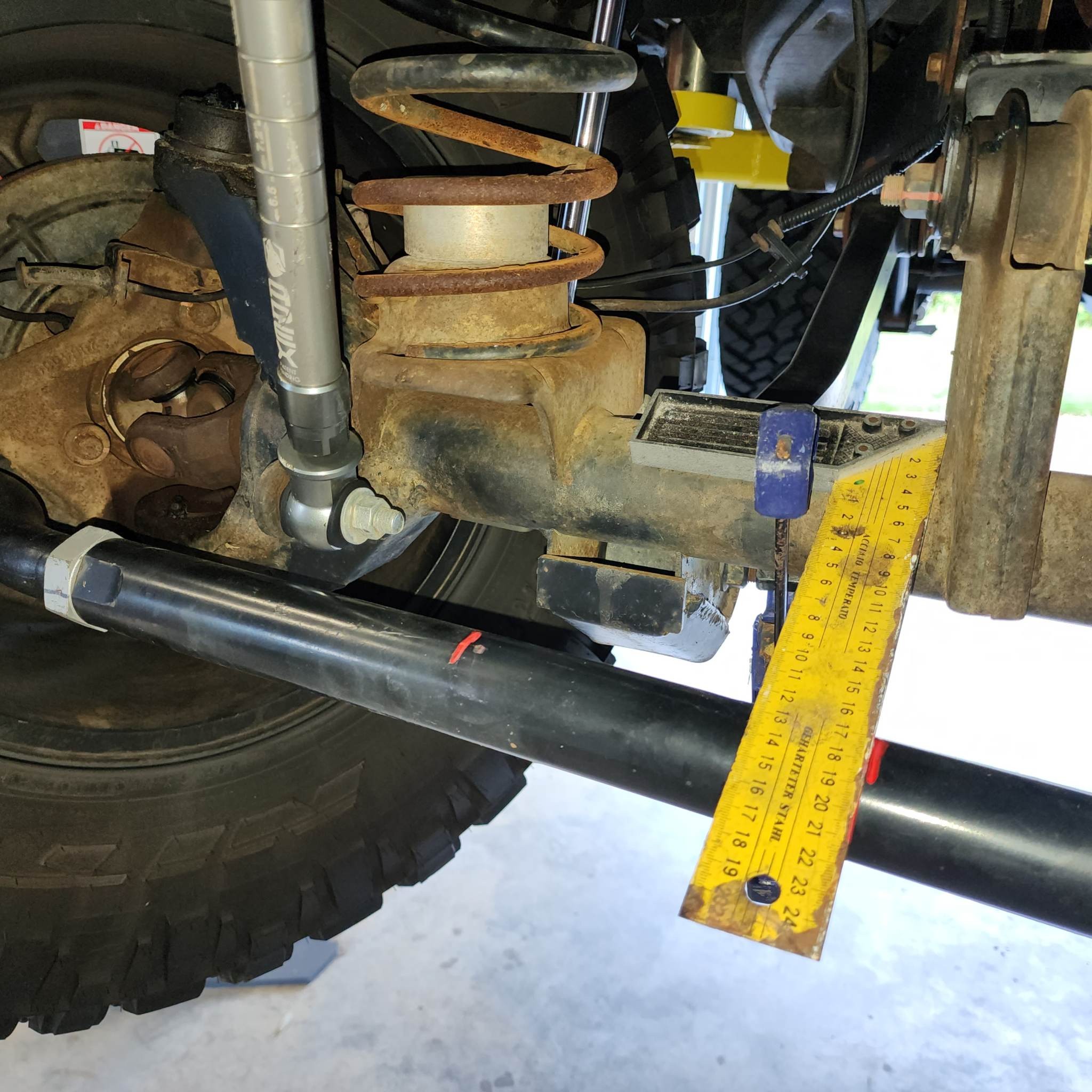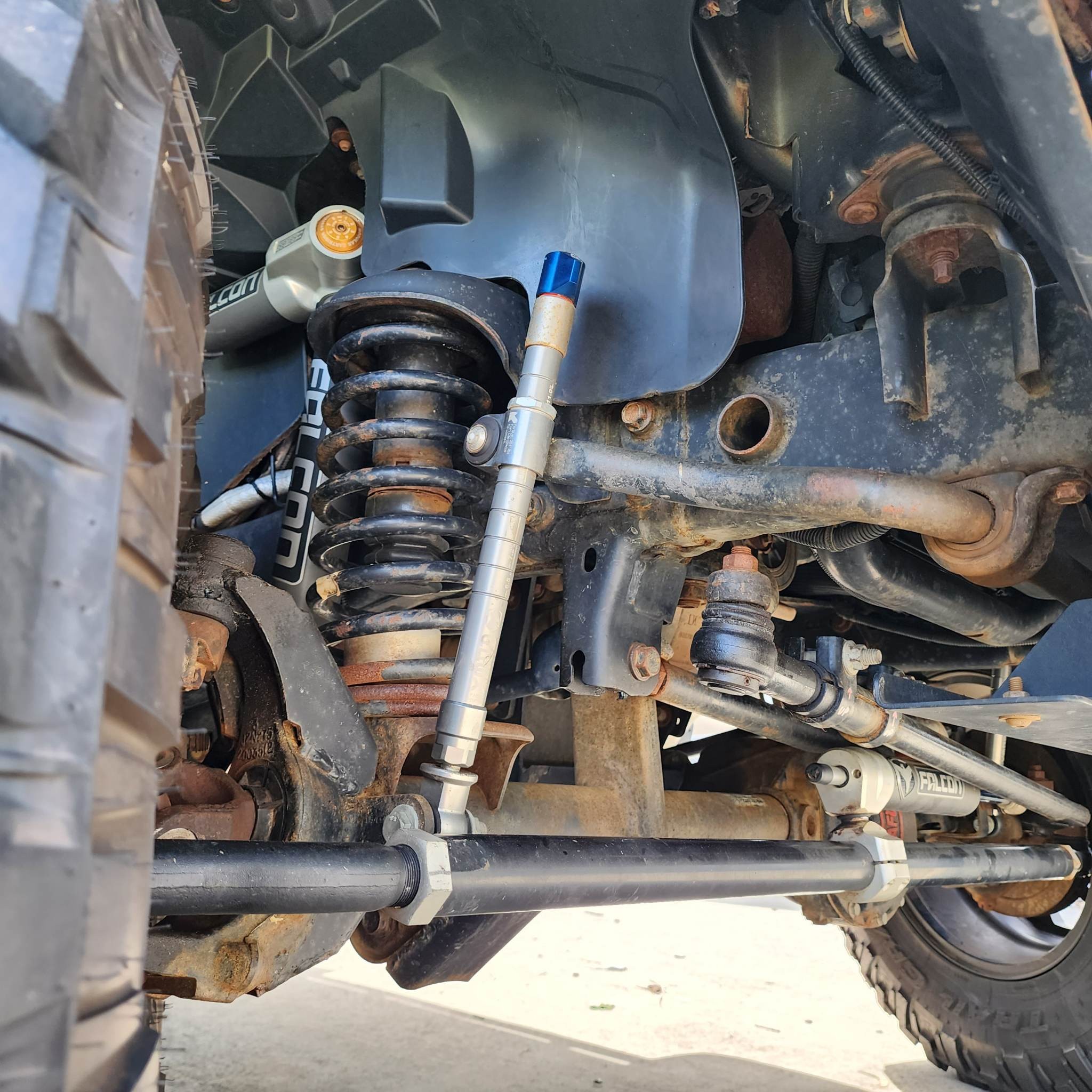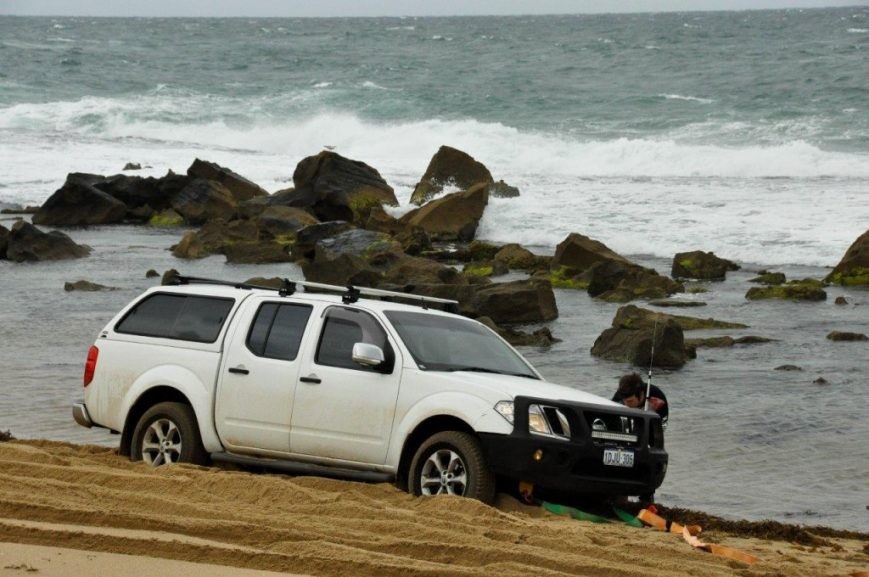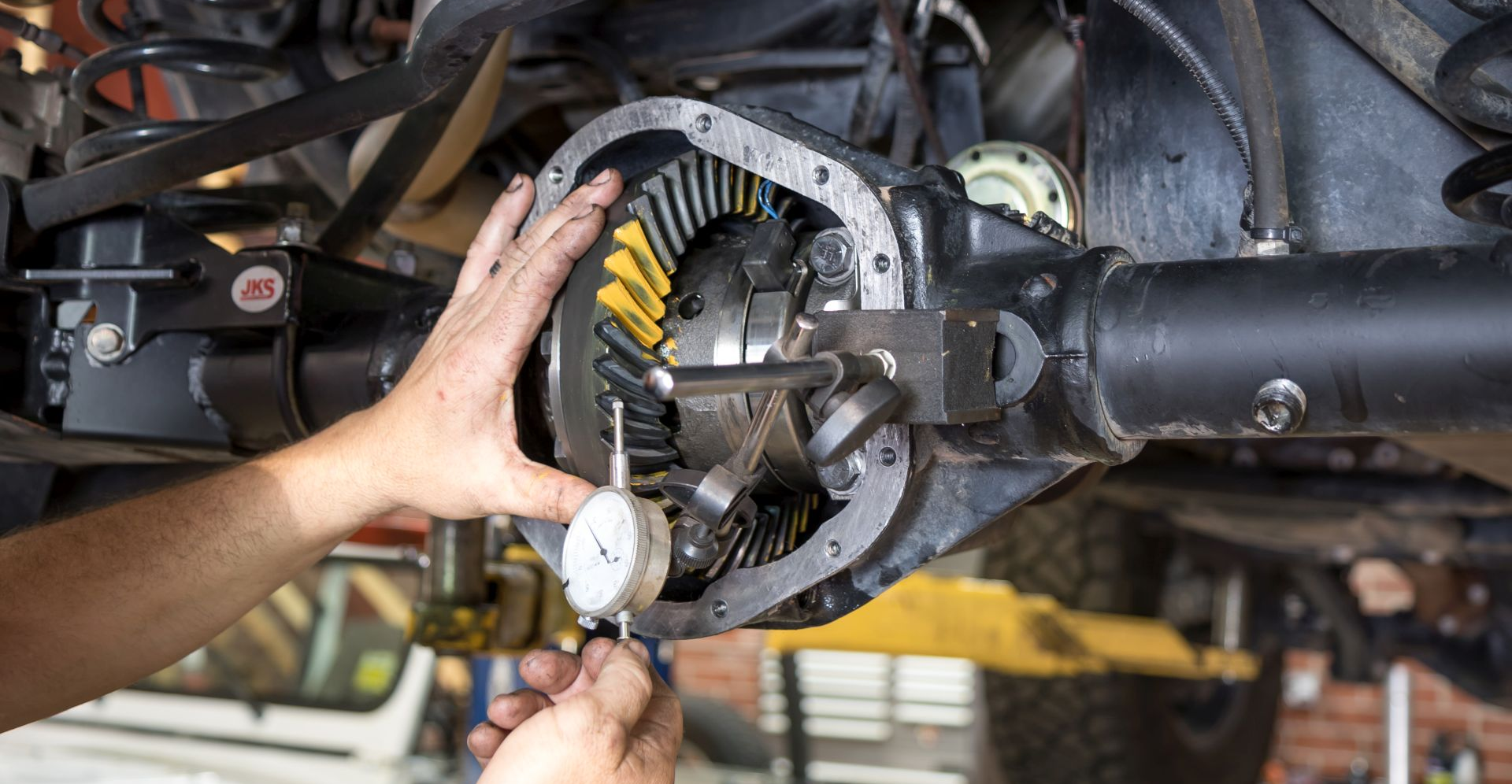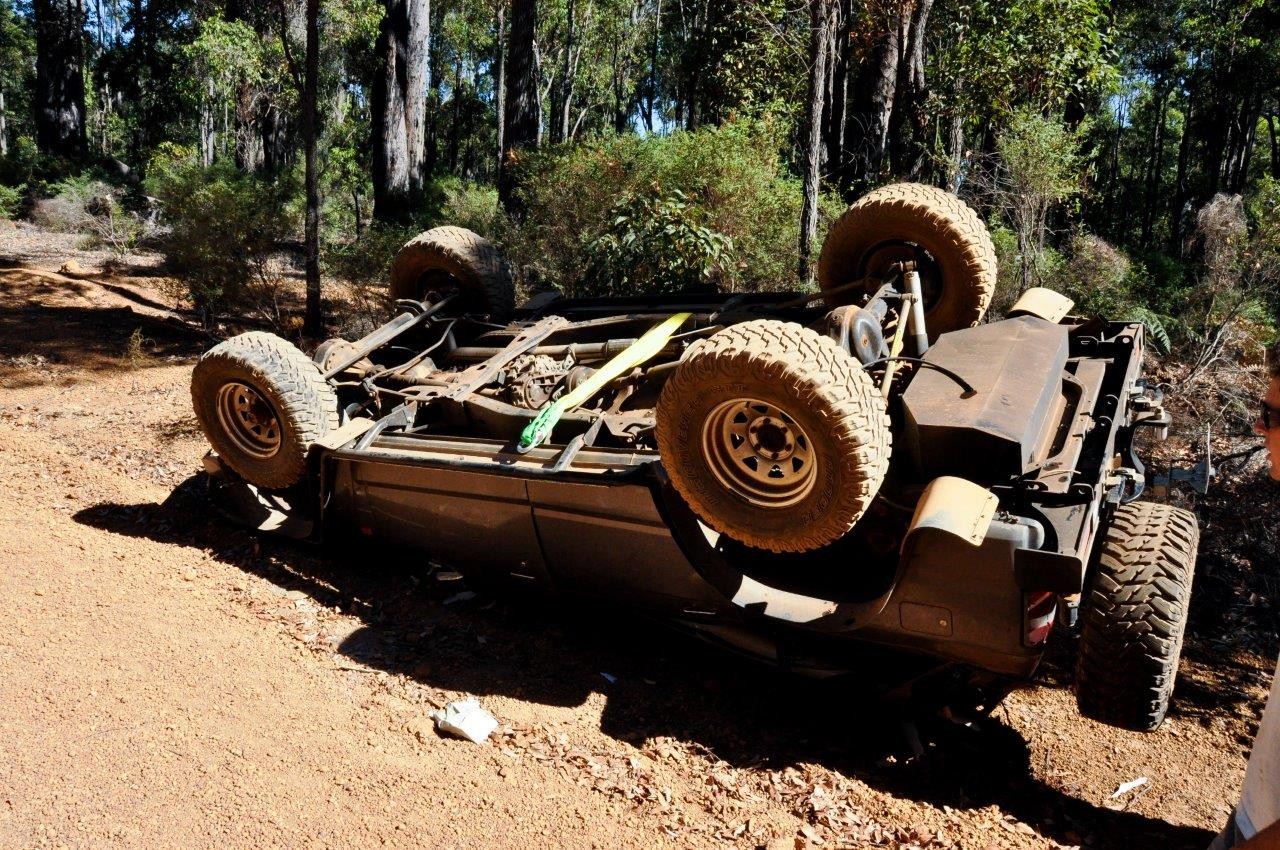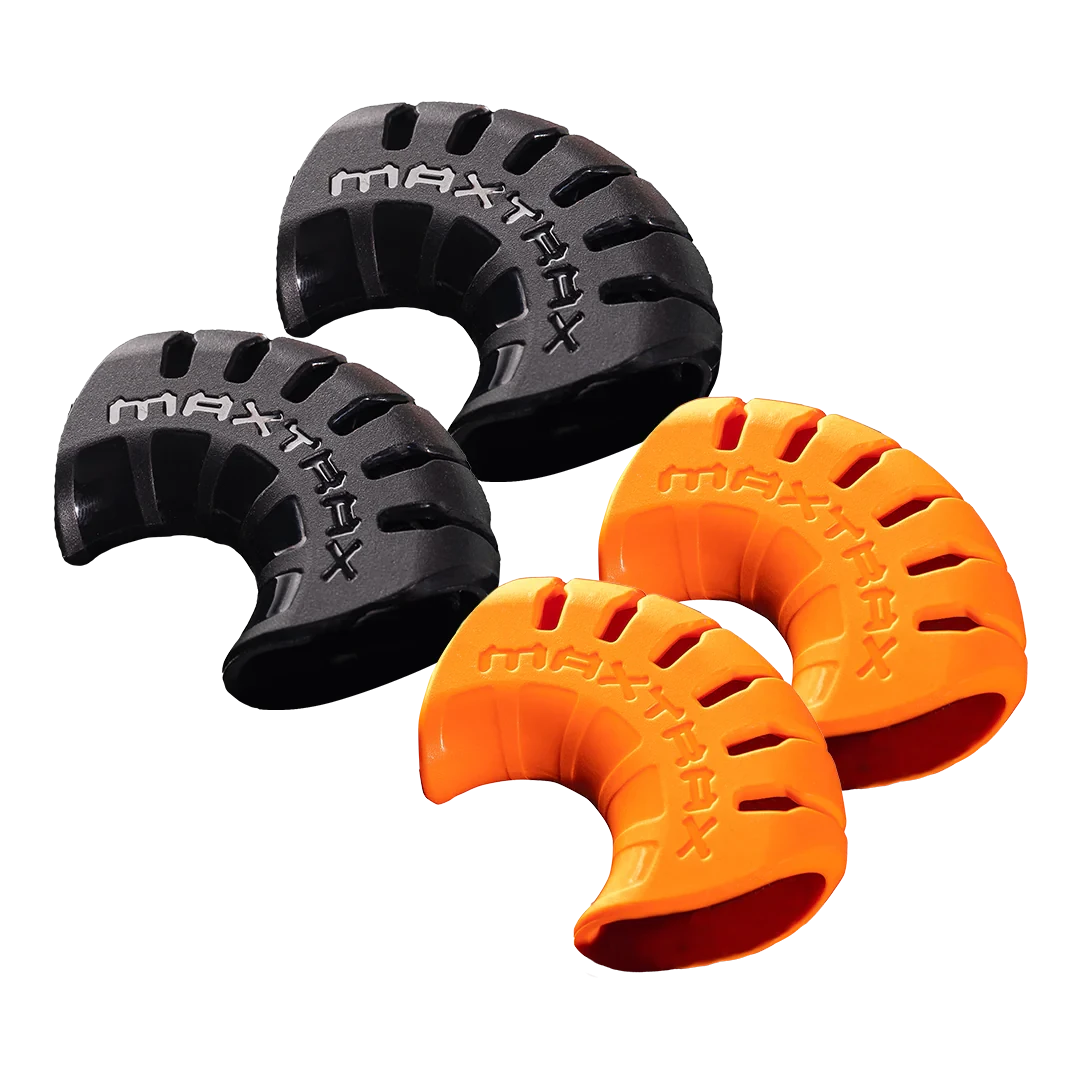Transmission Wind Up
So you’ve just pulled off the dirt and onto a bitument surface to drive home, but suddenly your 4wd refuses to go anywhere. You’ve played with the gears but the transmission is locked. Have you broken it? Well, maybe – but probably not. Most likely you’ve been caught by transmission wind-up.
Transmission wind-up is a pretty obscure problem, and not all vehicles are vulnerable to it. In fact it’s only going to affect you if you have a full-time 4wd vehicle with a diff lock. In general we’re huge fans of diff locks, because they make a real difference to your grip when you’re trying to get through the really rough stuff, but they do have a couple of quirks that can catch the unwary.
Transmission wind-up happens when the wheels on each side of your vehicle are trying to cover different distances, but are being forced to turn at the same speed. This usually happens when you have the diff lock on and you’re trying to turn on a road or other hard, high-grip surface. The wheels on the outside have further to go than the ones on the side you’re turning towards, but the diff lock is driving all four wheels at a constant speed. The torque from this sets up uneven stresses inside the transmission, and eventually the whole lot locks up solid.
If you don’t know what to do about it, transmission wind-up can cause a lot of expensive damage to the whole drive train of your vehicle. To avoid that it’s best not to get into a situation where it can happen in the first place, and that comes down to knowing when to use diff lock. Generally, if you’re on a soft surface it’s fine; if you turn, the wheels on the inside of the curve will just spin when the difference gets too much for them. On any surface where you actually need diff lock it should be perfectly safe to use it.
Where problems appear is when you drive out of the sand onto a good surface – usually a metalled road, but even a good dirt track can do it. Now all four tyres are gripping well, and it’s a lot harder for them to spin if the locked diff is driving them too fast. To avoid problems, try to disengage the diff lock as soon as you don’t need it anymore – and always disengage it before moving onto a hard surface.
What happens if you forget, and find yourself locked up? Well, don’t panic; you can avoid serious damage if you stop right away. Don’t try to power through it, because that isn’t going to work – you’ll just break things.
The first symptom of wind-up is shuddering; the tyres start to skip off the surface and the steering will become heavy. After that the transmission will lock in 4wd, and you won’t be able to select 2wd or disengage the diff lock. Finally, it will lock entirely and you’ll stop moving.
As soon as you notice any of these symptoms, stop right away. Try to disengage the diff lock. If you can’t do that, select reverse and back up slowly; that should unwind the tension in the transmission. If you have the gearbox in low range try to shift into high.
If that doesn’t work, try jacking up one wheel and shift into high-range 2wd. This is usually enough to clear the problem – but be aware that as the tension releases, the raised wheel can spin violently, so stay well clear of it.
After suffering from transmission wind-up it’s best to check all parts of the drivetrain as soon as you can. Tyres can have been badly stressed, or even pulled off the beads; it puts a lot of strain on the axles, drive shafts and transfer cases too. Before driving on make sure there’s no obvious damage, and when you get home have a thorough look at everything between the engine and the road. The sooner you do that, the less chance of any long-term problems.

